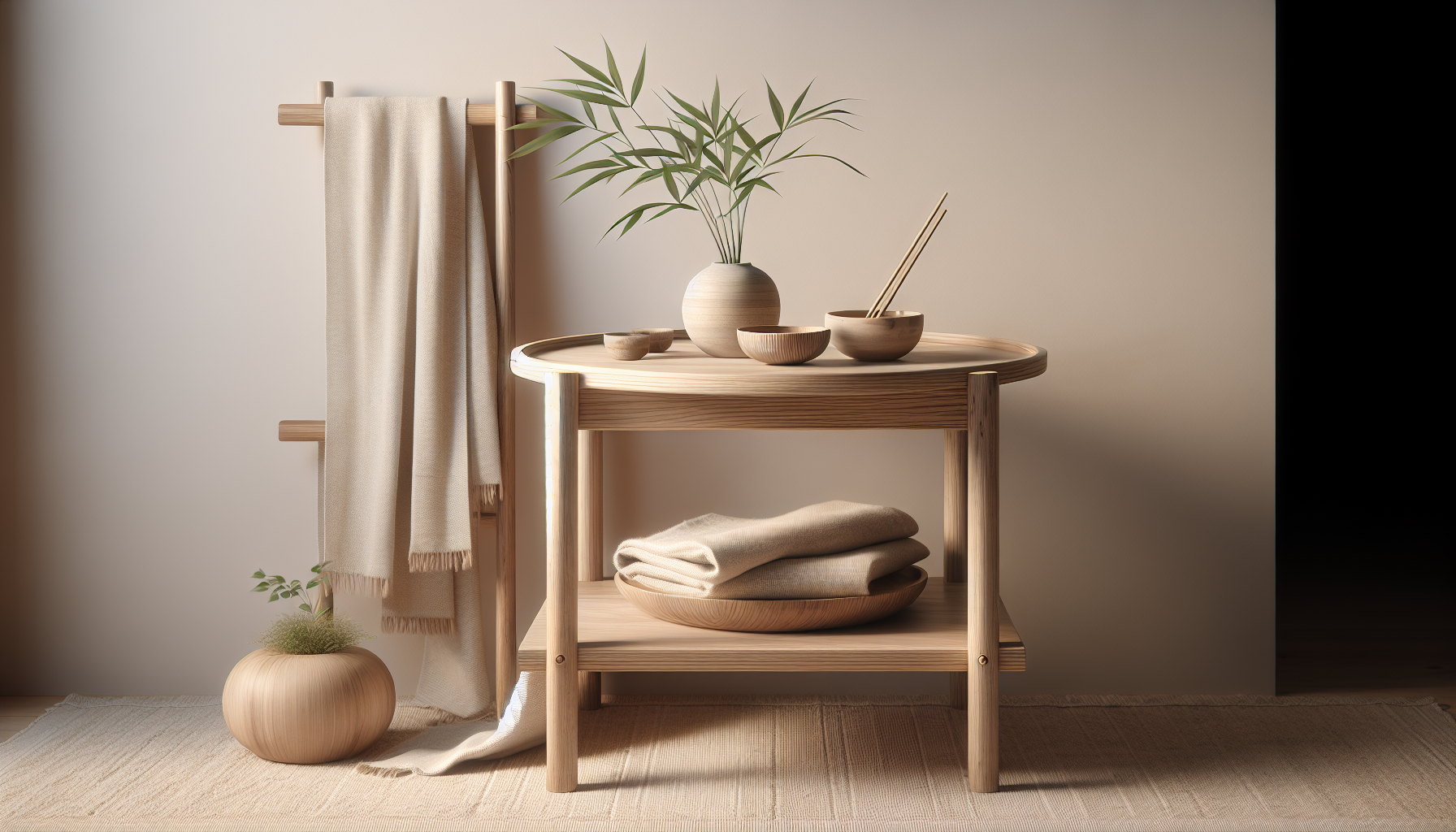Do you ever wonder how specific design styles can reflect our values, especially when it comes to sustainability? As more people become conscious of their environmental impact, design trends evolve to meet those needs. One interesting blend that has emerged is Japandi, which not only captures aesthetic elegance but also aligns beautifully with eco-friendly design principles. Let’s discuss the nuances of Japandi and how it resonates with sustainable living.
What Is Japandi?
Japandi is a design style that beautifully marries Japanese minimalism with Scandinavian functionality. It embraces simplicity, natural materials, and a strong connection to nature, creating a warm and inviting atmosphere in any space. This style prioritizes both form and function, making it ideal for those seeking a harmonious living environment.
Key Features of Japandi
Here are some of the core elements that define Japandi:
- Minimalism: Less truly is more in Japandi. The focus is on decluttering and choosing only essential and meaningful items.
- Natural Materials: Japandi emphasizes the use of wood, stone, and bamboo, which not only feel good to the touch but are also more sustainable than synthetic materials.
- Neutral Color Palette: Soft tones such as beige, gray, and muted pastels foster a calm environment, promoting peace and tranquility.
- Functional Furniture: Pieces are chosen for their utility as well as their aesthetic appeal, making each item purposeful in a living space.
Understanding these core features sets the stage for exploring how Japandi naturally incorporates eco-friendly design principles.
Eco-Friendly Design Principles
Before we dive deeper, let’s outline what eco-friendly design principles are. These concepts aim to minimize environmental impact while enhancing the overall quality of life. By considering aspects like resource efficiency, waste reduction, and sustainable materials, eco-friendly design seeks to create spaces that not only look good but also do good.
Core Eco-Friendly Principles
Here are some principles that exemplify eco-friendly design:
- Sustainable Materials: Utilizing renewable resources and materials with minimal environmental impact.
- Energy Efficiency: Designing spaces that promote energy-saving practices, from lighting to heating.
- Water Conservation: Implementing fixtures and landscaping that reduce water usage.
- Indoor Air Quality: Selecting non-toxic materials to improve the air quality in your home.
Now that you have a grasp on both Japandi and eco-friendly principles, let’s see how they intertwine.
The Connection Between Japandi and Eco-Friendly Design
Japandi aligns closely with eco-friendly design principles, making it an appealing choice for environmentally conscious individuals. By focusing on simplicity, natural materials, and sustainability, the Japandi style promotes an eco-friendly lifestyle.
Use of Natural Materials
One of the most significant aspects of Japandi is its commitment to natural materials.
| Material | Benefits |
|---|---|
| Wood | Renewable, aesthetically pleasing, long-lasting |
| Bamboo | Fast-growing, highly sustainable, lightweight |
| Cotton and Linen | Biodegradable, breathable, and sustainable options |
These materials not only contribute to the tranquil aesthetic of Japandi but also reduce reliance on synthetic options that often involve environmentally harmful processes.
Emphasis on Longevity
Sustainability isn’t only about the materials you choose; it’s also about the longevity of those items. Japandi promotes well-made furniture and decor designed to last. This principle aligns perfectly with sustainable living, where the goal is to reduce waste and avoid the cycle of fast fashion that can quickly fill landfills.
Minimalistic Approach
The minimalistic approach of Japandi encourages you to consider what you truly need. By reducing clutter and focusing on quality over quantity, you will find that not only does your space feel more calming, but you also consume less.
Aesthetic and Functional Harmony
In Japandi, aesthetic and functionality go hand in hand. Each piece serves a dual purpose, whether it’s a beautifully crafted chair that also offers comfort or a decorative element that doubles as storage. This approach helps to cut down on the number of items in your home, reducing resource consumption over time.
Indoor-Outdoor Connection
Japandi’s design philosophy often blurs the lines between indoor and outdoor spaces. Large windows and sliding doors create an open flow, allowing natural light to flood the area and encouraging you to connect with the outdoors. This connection not only enhances your emotional well-being but also promotes the usage of natural ventilation, reducing energy consumption.
Practical Ways to Incorporate Japandi with Eco-Friendly Principles
If you’re inspired to adopt Japandi into your living space while aligning with eco-friendly principles, here are some practical steps you can take:
Choose Sustainable Furniture
When selecting furniture, look for ethically sourced and sustainably made pieces. Consider artisans who use reclaimed wood or manufacturers who prioritize eco-friendly practices. This not only supports a healthier planet but also adds a unique touch to your home.
Opt for Natural Textiles
Replace synthetic fabrics with organic cotton, linen, or wool. These materials provide comfort while being gentle on the environment. When styled appropriately, they can enhance the warm, inviting vibe that Japandi is known for.
Declutter Mindfully
As you embrace minimalism, take time to assess what you truly need. Donate or sell items that no longer serve you, and organize what you keep. This conscious decluttering process not only makes your space feel more serene but also reduces waste.
Utilize Energy-Efficient Lighting
Incorporate LED lighting and natural light sources into your design. Use soft warm-toned bulbs that mimic natural light to create an inviting atmosphere. Consider using skylights or large windows to maximize daylight and reduce the need for artificial lighting.
Create a Green Space
Incorporating plants enhances the aesthetic while improving air quality. Choose low-maintenance plants that thrive indoors, such as snake plants or pothos, which require minimal care and help purify the air.
Embrace DIY and Upcycling
Get creative by repurposing or upcycling old items into new treasures. Rather than discarding furniture or decor, think about how you can give them a new life within your Japandi space. This practice not only reduces waste but also adds a personal touch to your home.
The Benefits of Combining Japandi and Eco-Friendly Design
By integrating Japandi with eco-friendly design principles, you’re not only enhancing your living space but also making conscious decisions that positively impact the environment. Here are some benefits that come along with this beautifully designed approach:
Improved Well-Being
Creating a calm and serene environment contributes to your overall mental well-being. The Japandi style, with its focus on simplicity and a connection with nature, encourages relaxation and mindfulness—essential elements for a healthier lifestyle.
Increased Financial Savings
By investing in high-quality items designed to last, you’ll save money in the long run. Sustainable practices often lead to lower energy and water consumption, adding to further savings on utilities.
A Positive Environmental Impact
By consciously selecting sustainable materials and adopting eco-friendly practices, your choices contribute to a healthier planet. This positive impact reflects your values and inspires others to think similarly.
Enhanced Space Functionality
Japandi makes your living space more functional by focusing on essential pieces. Ultimately, this means your home becomes more comfortable and user-friendly, increasing its usability for everyday life.
Challenges to Consider
While the beautiful blend of Japandi and eco-friendly design makes sense, it’s essential to consider some potential challenges you might encounter:
Cost of Sustainable Materials
Sustainable materials can sometimes come at a higher upfront cost, which may require careful budgeting. However, consider this an investment; quality pieces usually last longer and prove to be more economical over time.
Limited Accessibility
Depending on where you live, finding specific sustainable or Japandi-style items might be challenging. Online marketplaces have broadened access to these products, making it easier to find what you need.
Time Investment for Research
Implementing an eco-friendly approach requires research on products, brands, and practices. While this may take time, consider it an enriching journey toward a more sustainable lifestyle.
Final Thoughts
Making conscious design choices that align with both Japandi aesthetics and eco-friendly principles is an approach worth considering. Not only will you create a serene and inviting living space, but you’ll also play your part in supporting a healthier environment. As you reflect on your design choices, remember that each small decision contributes to a broader impact.
Whether you’re refreshing a single room or redecorating your whole home, embrace the Japandi philosophy of simplicity and sustainability. Each element you choose helps shape your space—and by extension, your world—into a more harmonious and eco-friendly haven.

